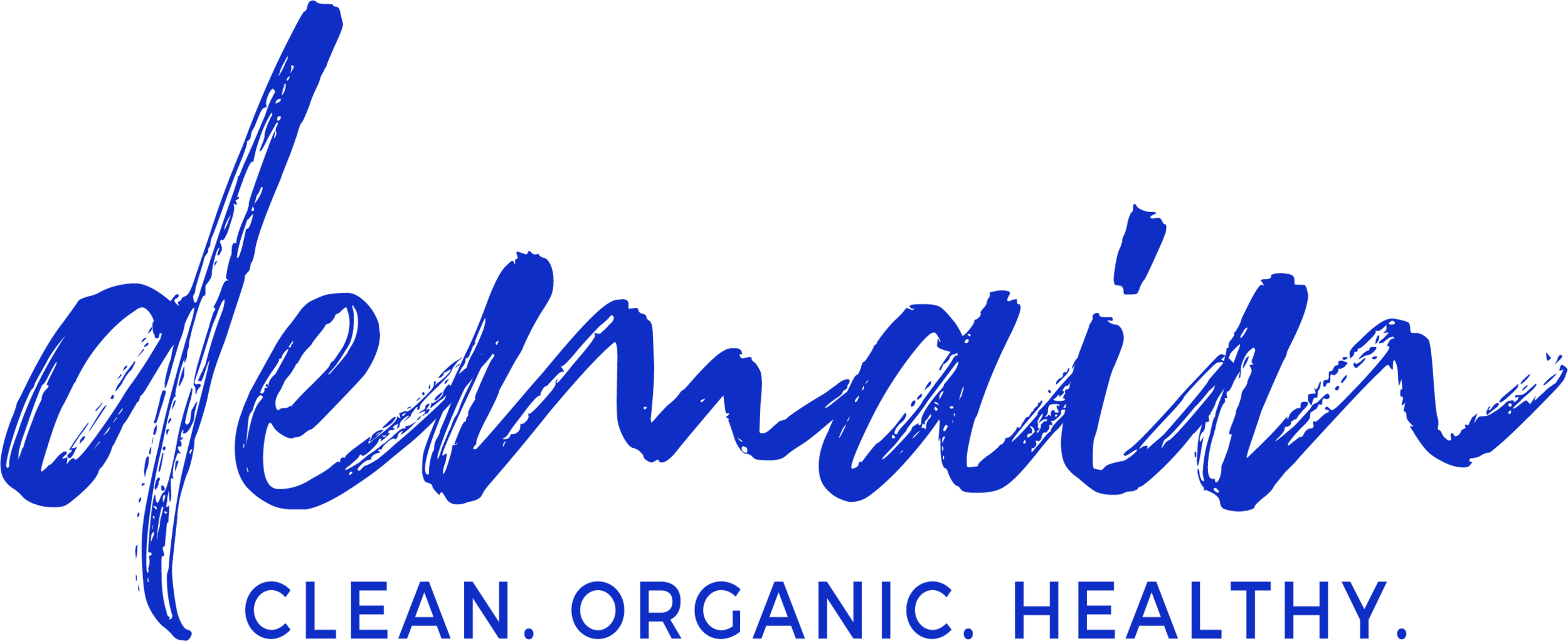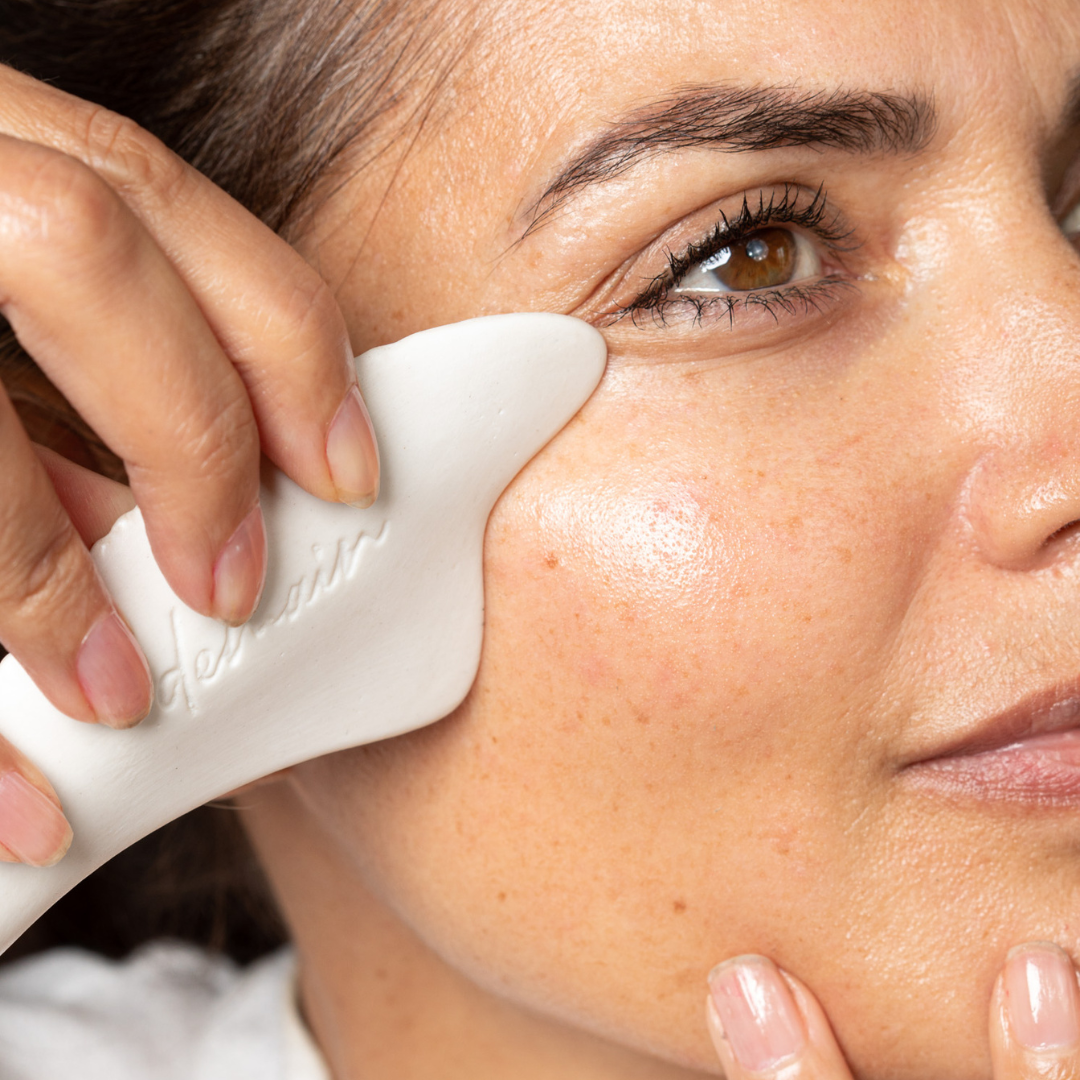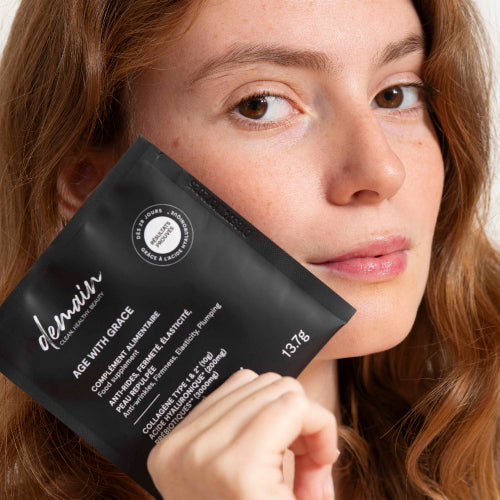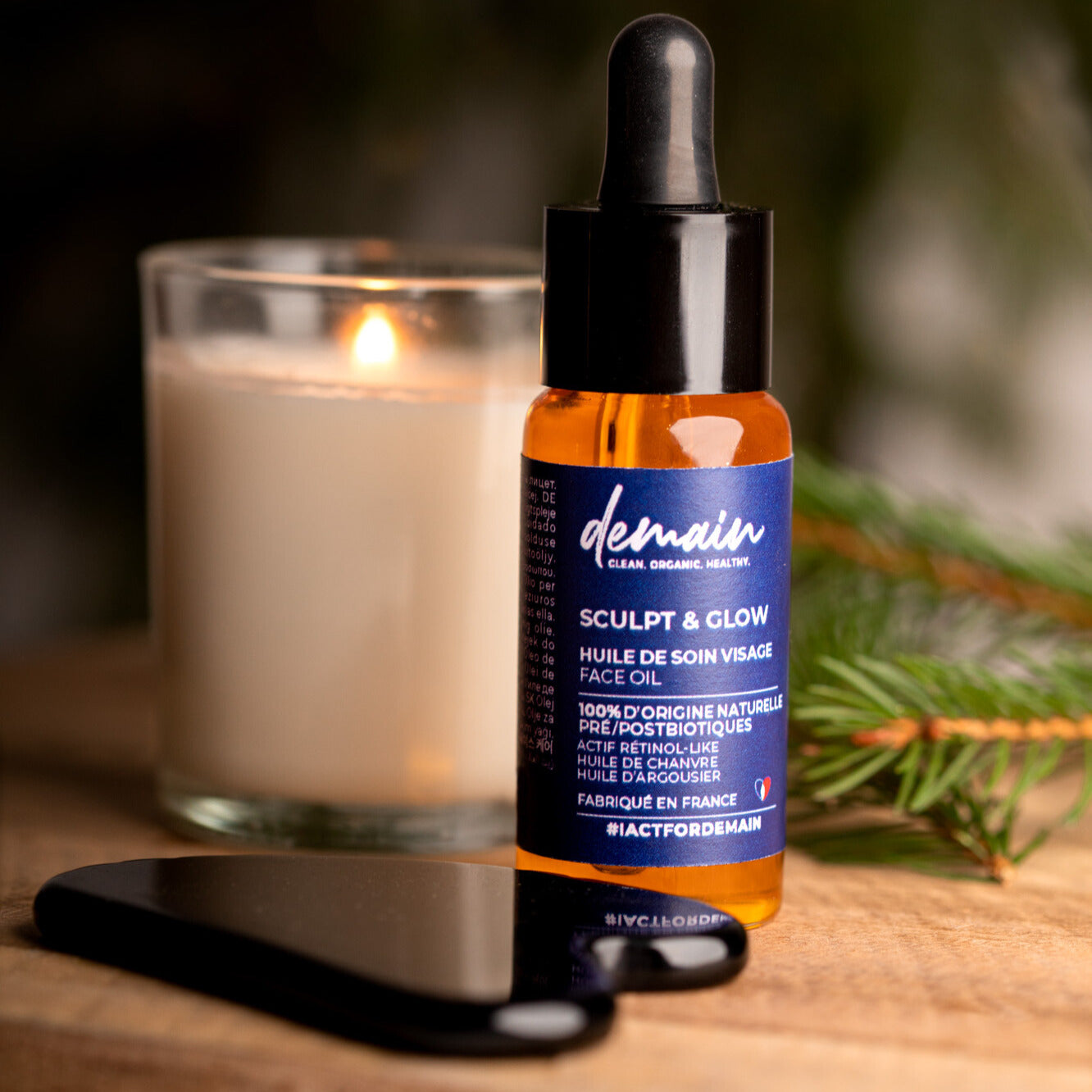Facial yoga is a miracle anti-aging practice. Its benefits aren't limited to improving complexion and redefining facial contours. It also helps loosen muscles, relieve headaches, and stimulate microcirculation. This facial exercise, combined with regular self-massage, contributes to more toned, radiant, and naturally younger-looking skin.
Understanding the concept of face yoga
Face yoga, also known as facial yoga, combines facial gymnastics techniques, Hatha yoga postures, and breathing exercises. This holistic practice aims to tone facial muscles, firm the skin, smooth wrinkles, and improve the complexion's radiance.
By performing massage and acupressure techniques, you can stimulate blood circulation and oxygenate skin cells. This promotes tissue regeneration, helps eliminate toxins, and decongests tissues for a more harmonious complexion.
To begin, it is recommended to practice for a few minutes a day. Here are some simple exercises to incorporate:
- Inflate your cheeks with air and move it from one cheek to the other.
- Use your fingertips to gently pat around the eyes and over the entire face
- Make circular movements with the palm of your hand on the top of your forehead (from the bottom up and from the inside out)
These actions help maintain smoother, firmer and brighter skin.
Why do facial yoga?
Face yoga is a natural discipline that is suitable for everyone, men and women, regardless of age.
It helps prevent the signs of aging by strengthening facial muscles and stimulating collagen production.
Aesthetic experts like Sylvie Lefranc point out that this method can be an attractive alternative to more invasive treatments. Benefits include:
- Toning facial muscles
- Reducing the appearance of fine lines and wrinkles
- Better blood circulation and oxygenation of skin cells,
- A more radiant complexion.
In addition to these aesthetic benefits, facial yoga helps release accumulated muscle tension in areas of the face such as the jaw and forehead. This relaxation contributes to better management of daily stress, thus promoting overall well-being.
The positive effects on mental health are also worth noting. Facial yoga offers a holistic approach combining relaxation and natural rejuvenation, two factors that have a significant impact on mental health.
Does it really work?
Results from facial yoga vary depending on the individual and the consistency of the practice. Some studies, such as one published in JAMA Dermatology, show significant improvements after several weeks of exercise. Participants noted firmer cheeks and a reduction in the signs of aging.
To see visible results, it is recommended to practice these exercises daily. A regular approach guarantees noticeable improvements in skin firmness and elasticity.
For optimal results, it is recommended to practice daily for 5 to 10 minutes.
Facial exercises: effectiveness and techniques

Preparing your skin for facial yoga
Before you begin practicing facial yoga, it's essential to prepare your skin by applying a treatment oil or oily balm. The oil will provide glide and make your practice easier. This skin preparation will also prevent facial features from pulling and wrinkles. You can use your usual facial cream or oil. At Demain®, we recommend using the Sculpt & Glow treatment oil or the Time to Detox cleansing balm (whose oily texture makes it easier to massage) on clean, dry skin.
Basic exercises to know
To get started with face yoga, here are some essential exercises:
1. Forehead Smoothing: Place your fingers in the center of your forehead and stretch the skin outward. This movement helps reduce horizontal wrinkles.
2. Cheek toning: Smile with your lips closed and try to lift the corners of your mouth towards your ears. Hold for a few seconds and then release.
3. Brow lift: Place your fingers under your eyebrows and gently smooth them upward and outward while opening your eyes wide. This exercise helps prevent drooping eyelids.
4. Double chin reduction: With your head tilted back, push your tongue against the roof of your mouth. You will feel tension under your chin, which helps firm up the area.
5. Lip toning: Gently but firmly run your tongue around your lips. Start from the top down, then reverse the direction of movement. This exercise helps firm up the area around your lips.
Advanced techniques for optimal effect
To maximize the benefits of facial yoga, some advanced techniques can be incorporated into your routine. For example, facial acupressure is an effective method for stimulating collagen production and firming facial features. By applying gentle pressure to specific points, you can improve blood circulation and energy.
Another technique is to use massage tools like gua sha or jade rollers. These instruments help drain toxins and reduce puffiness under the eyes.
Mindful breathing exercises are also essential for relaxing facial muscles and reducing tension. You can practice deep breathing while performing your facial exercises to maximize the relaxing effects.
Finally, combining these techniques with a healthy lifestyle —balanced diet, hydration, and sufficient sleep—reinforces the results obtained.
Specific exercises to fight wrinkles
To target specific wrinkles, here are some effective exercises:
- Crow's feet : Use your fingers to gently pull the skin around your eyes outward. Then blink rapidly for 10 seconds. This exercise helps smooth out fine lines around your eyes.
- Lower Face : To firm the lower face, push your tongue against the roof of your face while lifting your chin. Hold this position for 10 seconds and repeat 5 times.
- Cheeks : Inflate your cheeks as much as possible and hold for 5 seconds before releasing. Repeat this exercise 10 times to tone your cheeks and reduce sagging skin.
- Lip contour : Smile with your lips closed and pull the corners of your mouth outward. Hold this position for a few seconds, then release. Repeat this exercise 15 times to reduce fine lines around the mouth.
How long before I see the effects?
Patience and consistency are essential to see the first effects of facial yoga. Generally, the first results appear after 2 to 4 weeks of regular practice.
This timeframe may vary depending on several factors:
- The person's age
- The initial condition of the skin
- The frequency of sessions
Daily sessions of 5 to 10 minutes are recommended to maximize benefits. By incorporating this practice into your skincare routine, you can see significant and lasting changes in your facial appearance.
The Importance of Massage in Face Yoga
Does facial massage really work?
Facial massage, as a complement to facial yoga, has several benefits. It helps stimulate blood and lymphatic circulation , which promotes better oxygenation of skin cells. This process also allows for the elimination of toxins, contributing to a brighter complexion.
By applying pressure and using circular motions, facial massage activates collagen production. Collagen is essential for maintaining skin elasticity and firmness. Regular practice can therefore reduce the signs of aging.
The benefits don't stop there. Facial massage can also reduce muscle tension. Using simple movements like circular motions on the cheeks and forehead promotes deep relaxation.
To maximize the effects, it is recommended to use tools such as jade rollers or gua sha. These instruments allow you to target specific areas of the face and improve the effectiveness of the massage.
Massage techniques for a radiant face
Among the most effective massage techniques is lymphatic drainage. This type of massage stimulates the lymph nodes located under the jaw and behind the ears. By improving lymphatic circulation, it helps eliminate toxins and reduces swelling, resulting in a clearer, brighter complexion.
Another popular technique is Kobido massage, which originated in Japan. This massage uses tapping, kneading, and smoothing movements to stimulate blood circulation and relax facial muscles. It provides a natural lifting effect and restores radiance to the skin.
For acupressure enthusiasts, stimulating points on the face can be very beneficial. Applying gentle pressure to these points can relieve tension and promote relaxation. When practiced regularly, these techniques can transform the appearance of the skin within weeks.
The role of massage in stimulating blood circulation
Massage plays a crucial role in stimulating blood circulation by promoting better dilation of blood vessels. This action allows for an increased supply of oxygen and essential nutrients to skin cells. Regular massages can also reduce muscle tension, improving skin suppleness and vitality.
The benefits don't stop there. By improving blood circulation, massages help eliminate toxins, which can prevent the appearance of various skin imperfections. Additionally, using essential oils and/or nourishing oils during the massage can intensify these beneficial effects.
To achieve optimal results, several massage techniques can be incorporated into your skincare routine:
- Effleurage : gentle, gliding movements to circulate lymphatic fluids
- Kneading : deeper pressure to activate circulation
- Tapping : light strokes to stimulate muscles and skin
By practicing these techniques, you can significantly improve the appearance and health of your skin.
Self-massage methods for toned and radiant skin
To perform an effective self-massage, start by using your fingers in gentle circular motions (from the bottom up and from the inside out) over the entire face.
Then apply gentle pressure, following the natural contours of your face, moving from the center outward. This stimulates blood circulation and helps flush out toxins.
Next, use a tool like a jade roller to smooth each area of your face. Move the roller from the bottom up and from the inside out. This action smooths wrinkles and decongests tissues by circulating lymphatic fluids.
You can also practice cheek kneading. Use the pads of your fingers to gently pinch the skin and release. This technique tones muscles and promotes collagen production for a firming effect.
Finally, for a soothing effect, finish by lightly tapping with your fingertips on the forehead, cheekbones and chin.











